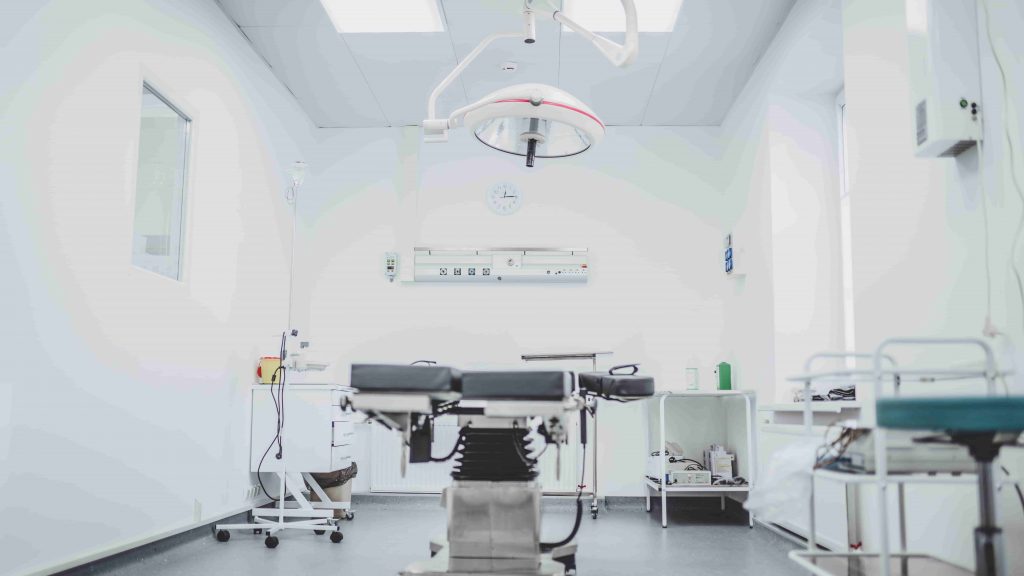Overhead lamps, surgical headlights, and fibre-optic cables all serve to illuminate the surgical field as much as possible. Because of these developments, medicine today is able to prioritise the importance of a well-illuminated surgical field with no shadows and minimal heat.
There are three main kinds of surgical lighting you might see in the operating room, and in this blog post we’re going to break each one down to demonstrate its importance. Let’s take a look.
Overhead Surgical Lights
Wall-mounted, wheel-bound, or affixed to the ceiling; the purpose of these lights is to flood the surgical field with as much illumination as possible. Overhead surgical lights are designed to be much brighter than the average household lightbulb—typically between 160,000 and 40,000 lux—and to have a large diameter around the central point of light. LED or Xenon lamps are used to maximise light diffusion without creating a lot of heat.
These lights are crucial to a good outcome, as they create the basis of illumination for the surgeon. While there are certain areas they can’t permeate, they’re still essential; an operating room without overhead lights would be like trying to operate in almost total darkness.
Surgical Headlights and Loupes
These are smaller lights mounted onto surgical headgear, much like the dental loupe lights you may have seen on a trip to the dentist. Their purpose is to provide a constant, bright point of light in the surgeon’s field of view; designed to be flexible and comfortable, they chase away almost all of the remaining shadows from the surgeon’s vision.
Headlights are typically mounted on head gear that is used for other purposes, such as magnification of a small surgical site. Their aim is to provide the dexterity needed to perform a very difficult task in a small field of operation, and as such are very useful as more than just a light.
In-Cavity Surgical Lighting
It is difficult for overhead lights – and even surgical headlights – to provide enough illumination inside a patient, and it’s crucial for the surgeon to be able to see everything. One of the main difficulties with providing this light is the minimisation of heat, as too much heat can result in damage, over the hours of a surgery.
To reduce heat and provide as much illumination as possible in such a difficult space, surgeons use fibre-optic cables. These support a more dextrous approach to surgery, allowing for a full field of view inside the patient. In-cavity lighting can be attached to the surgical tools being used, or sit independently inside the cavity for ultimate flexibility.
Choose the right lighting for the job
The Endovision team will happily help you choose the right surgical lighting and tools for your practice, providing reliable advice and advanced technology to suit your needs. If you are unsure which pieces of technology you should add to your repertoire, get in touch with us today to discover the options that will optimise your surgical suite.


